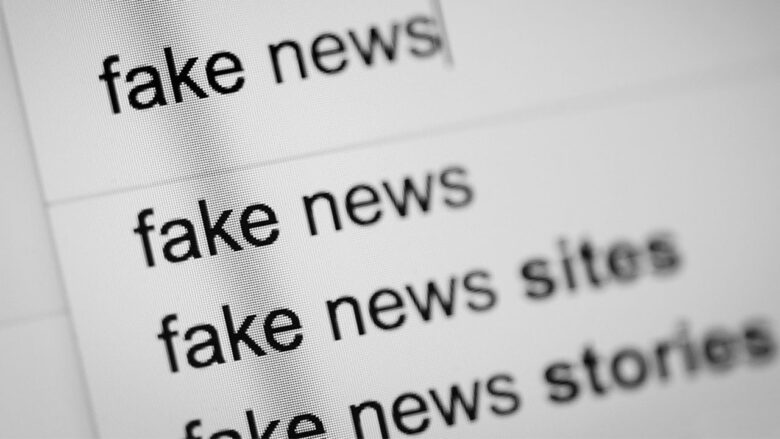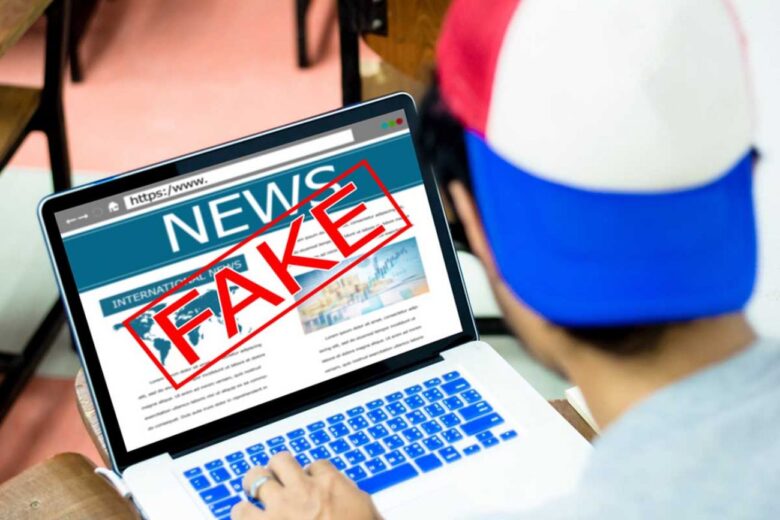In a world awash with digital content, the ability to distinguish between fact and fiction has never been more vital. Every day, millions of stories circulate online — some heartwarming, some heartbreaking, but unfortunately, not all are true. As we navigate the boundless sea of information, our innate desire for connection and understanding can sometimes land us on the rocky shores of misinformation.
Consider the nostalgic feeling of sitting down with the Sunday paper, feeling the crisp print between your fingers, and smelling the faintly inky aroma. It was a ritual of trust between us, the readers, and an institution that stood behind its words.
Today, with a single tap on our screens, stories from around the globe flood us, but the warmth of that tactile assurance is gone, replaced with an unsettling question: Is this story for real?
Trust, but Verify ─ The Source Matters
The first step in our quest to spot fake news is to critically evaluate the source of the information. In the personal narratives of our lives, we know which friends are trustworthy and which tend to embellish. Apply that same wisdom to online sources. Is the outlet known for its journalistic integrity? Does it have a track record of accountability?
But remember, reputable sources can also fall victim to falsehoods, so we must not rely on familiarity alone. Practice due diligence by looking for official verifications, such as the blue checkmark on social media profiles. You can also visit the website’s “About” page to understand its mission, ethics, and standards — learn more for a deeper understanding of how a secure and trustworthy internet presence is established.

Source: lesechos.fr
Look for the Roots ─ Evidence and Corroboration
Imagine the caution you’d exercise if someone told you a sensational story at a family gathering. You might lean in, intrigued, but you’d likely look around to see if Uncle Jack is nodding in agreement or if Aunt Mary looks skeptical.
In the online arena, verifying a story’s claims requires a similar approach. Seek out evidence, corroborating reports, and consensus among multiple reputable outlets. If it’s truly newsworthy, multiple voices will be talking about it.
Beyond the Headline ─ Context Is Key
The human mind loves a good story, and headlines often promise just that — a doorway into another world. But, much like you wouldn’t judge a book by its cover or a person by their appearance, don’t judge an article by its headline alone. Instead, read beyond the bold type. Look for the context that gives shape and meaning to a story, much like the personal experiences that inform our views.
The Emotional Hook ─ A Telltale Sign of Trouble
In real life, when someone tries too hard to sway you, throwing emotion after emotion in your direction, you might begin to wonder what they’re hiding. This same instinct applies in the digital realm when you encounter news stories. If an article seems engineered to provoke outrage, fear, or an immediate emotional response, it’s time to step back. Genuine news aims to inform, not incite.
Quality Control ─ Professionalism in Presentation

Source: bridgemi.com
Misinformation often lurks behind sloppy presentation. Mistakes that would make our English teachers cringe, such as typos or poor grammar, can be red flags. Reliable news bears the hallmarks of professional journalism: courtesy, clarity, and respect for the audience. If an article doesn’t meet these standards, its content might not be worth your trust.
Timeliness and Relevance ─ The Date Stamp
Recycling old news as if it’s happening right now is a common trick in the faker’s toolkit. It’s like hearing the same urban legend from your childhood spun as a “recent event.” Check the publication date of any alarming news — time and context can drastically change the relevance and accuracy of a story.
Visual Cues ─ Seeing Shouldn’t Always Be Believing
Our eyes can be deceived, and in an era of sophisticated digital manipulation, even more so. Before accepting an image or video as proof, consider the source and look for signs of alteration. Much like scrutinising a questionable photo in a magazine, apply the same critical eye to digital imagery.
The Power of Cross-Checking
Cross-referencing is not just for librarians or fact-checkers; it’s a skill we use daily. When faced with gossip or a rumor in your community, you naturally check the story against what you know or seek confirmation from others. The same principle is crucial when vetting online information. Cross-check against multiple sources to foster a fuller picture of the truth.
The Heart of the Matter ─ Human Impact

Source: kaspersky.com
At the core of the issue, fake news distorts the very fabric of our shared human experience. It’s not just about incorrect facts; it’s about how these fabrications affect real people’s lives. Be mindful of how misinformation can sow discord and distrust within communities, much like a false rumor can tear apart friendships.
Education and Empowerment ─ Spreading Media Literacy
Sharing stories comes naturally to us, but in the digital world, we must share responsibly. By investing time in educating ourselves and others about media literacy, we can strengthen our collective defenses against misinformation.
Encourage discussions about evaluating news sources, reading critically, and checking facts among your circle of friends and family. Together, we can create an informed public, armed against the waves of misinformation threatening to erode our sense of shared reality.
The journey to sift through the digital deluge of news isn’t simply about clicking the right links or spotting telltale signs of a hoax. It’s a profoundly human endeavor that touches the essence of how we connect, learn, and grow as a society.
As we pass down the skills of discernment and critical thinking, we are upholding a tradition of truth-seeking that has always been the cornerstone of human progress. With each fake news story we debunk, we affirm our commitment to honesty and deepen our connection to the truth — one of the most sacred trusts in our shared human experience.




